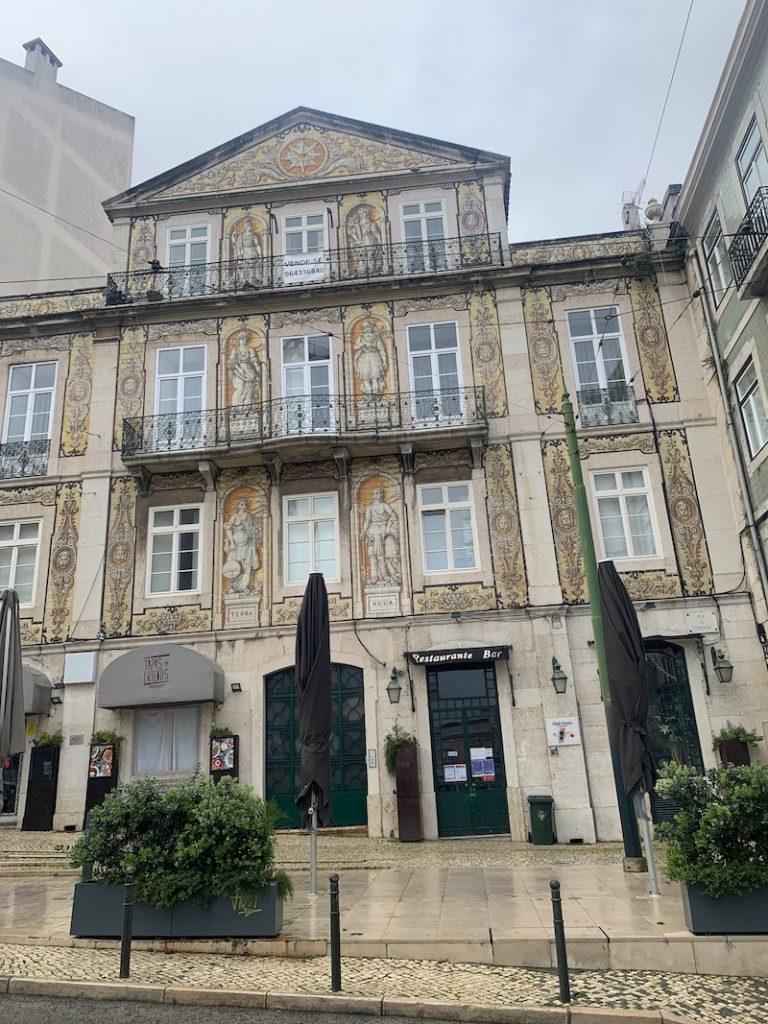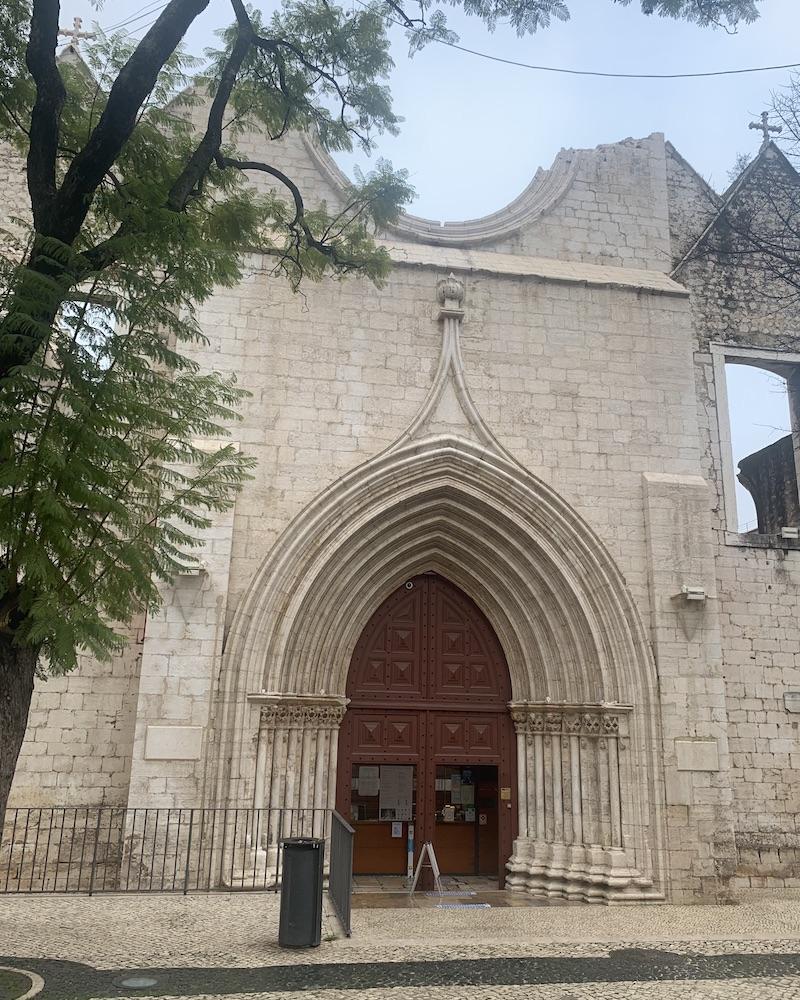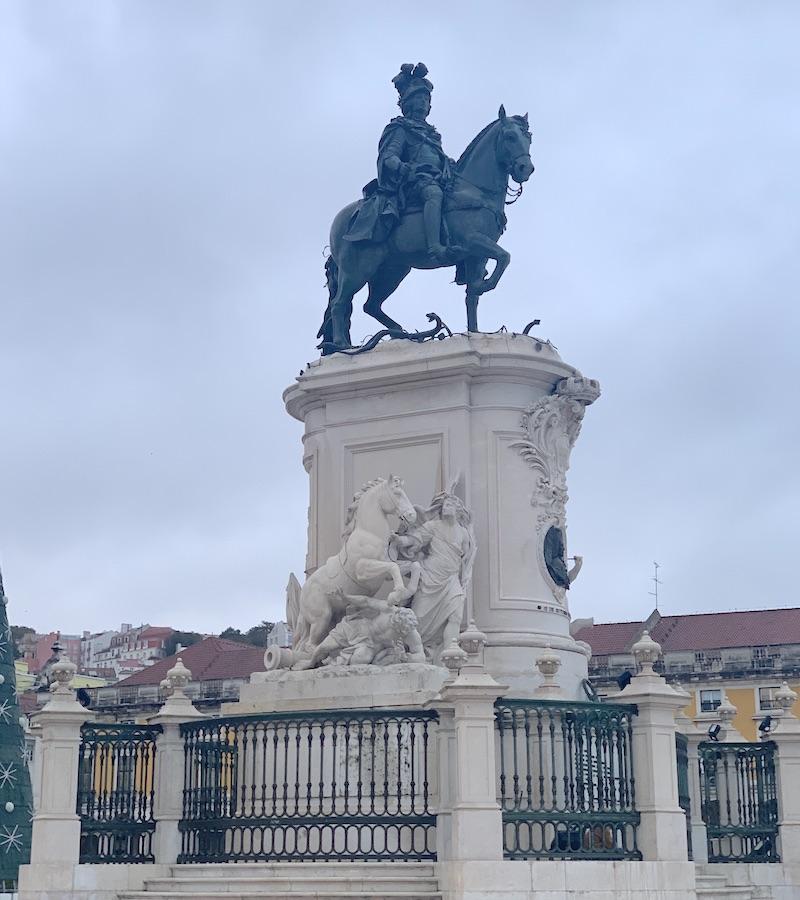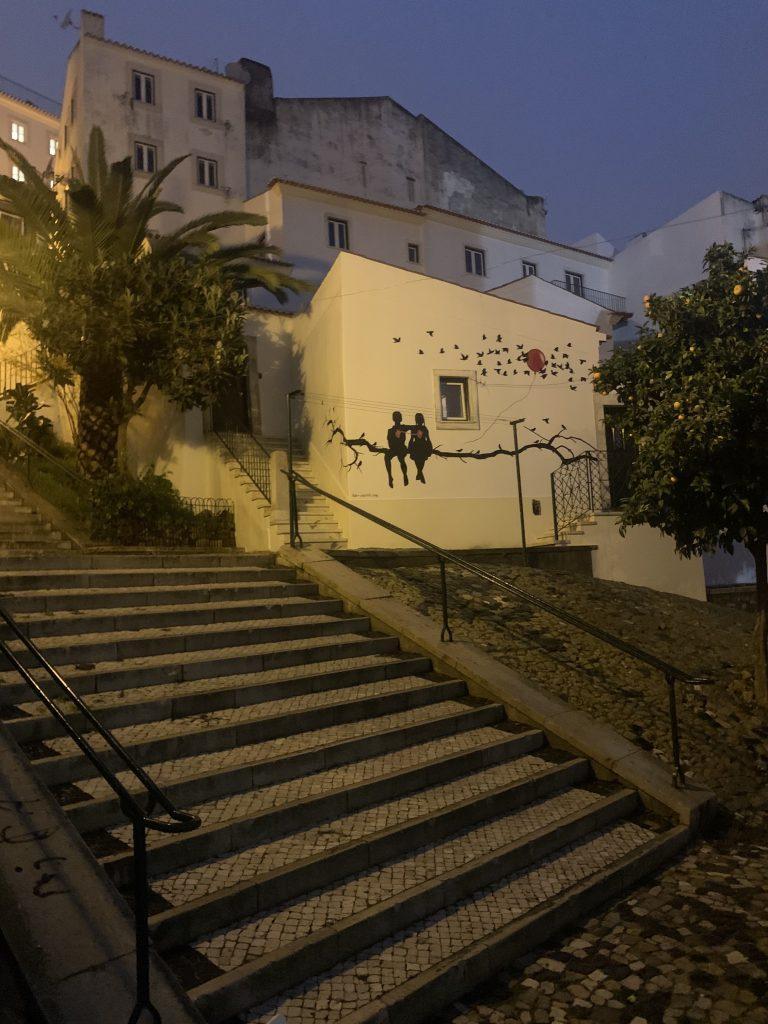What better way is there to explore one of my favourite cities than seeing Lisbon with a local? I have been to Lisbon several times and as I plan to spend a lot of time here over the coming years – with the possibility of even moing to Portugal – I wanted to get to know Lisbon a deeper level. I was looking for the best Lisbon free tour Lisbon had on offer to give me a local insight.
I’d already spent four days in Lisbon on a previous trip and had seen the fabulous main sites including Belem, Jeronimos monastery, Se Cathedral and Castelo Sao Gorge. Most of the big Lisbon tours seemed good (Sandemans and City Guru) seemed to be overly touristy and commercial. So when I came across the ‘Lisbon Chill out Free tours’ I was really pleased to find that this was a small sized local company run by 4 Portuguese friends.
The Lisbon Chill Out Tour – The Best Free Lisbon Tour
The Lisbon Chill Out tour is the best free Lisbon tour around. The concept of a free walking tour means that you tip the tour guide at the end of the tour based on what you think it is worth. This allows for students and those on low income to still enjoy tours and learn about Lisbon. You can also ‘give back’ in other ways too by promoting them on social media or a blog (like this one!) But at the moment due to Coronavirus tour guides have really been badly hit and I encourage you to pay whatever you can afford and be generous! It’s a three hour tour in total and in my opinion the tour is worth at least €20-30.
Reserving the Tour and Where to Meet
This Free Tour Lisbon runs every day at 10am, 11am and 3pm but you do need to reserve your place before hand by booking online here. The meeting point is at Prace Luis de Camoes and there are excellent instructions on how to get there on their website and emails. Remember to bring water and a good jacket. Wear comfortable walking boots or trainers as there is a LOT of walking and some quite a challenging uphill walk when you trek to the castle!
We were met by the fabulous passionate history buff Jose at Prace Luis de Camoes. He was well organised and sent messages to make sure that we knew what we were doing and how to get to the meeting place. The Google map was slightly off and so he even rang me when I said I was a bit lost! Jose has lived in Lisbon all his life and has personal stories to tell. He is such a friendly and personable guy who trained as a teacher and set up Lisbon Chill out tours when he was made redundant in the financial crisis.
It was one of the most friendly tours I have been on (and I have been on a lot of walking tours in many cities!) as we were all asked to introduce ourselves at the start. It was a chance to get to know each others nationality and reason for visiting Lisbon. Then the history of Lisbon was introduced, and WOW! Such an interesting history lesson and I learnt so much!
A Brief History of Lisbon
In it’s early history, Lisbon was a battleground for the Phoenicians, Greeks and Carhaginians. The Romans staerted their reign in Lisbon in 205BC when Lisbon became one of the most important cities in the Iberian Peninsula (that’s Spain and Portugal together).
The Moors arrived in 714 and resisted Christian attacks for around 400 years, but the city was then taken over by the Christians who expelled all of the Moors from the peninsula.
The country of Portugal officially became a Nation State in the 12th Century. Legend says that the city was founded by Ulysses and the namke comes from the Phoneician ‘Allis Ubbo’ which means enchanting port. And enchanting it certainly is!
During the 15th Century it was the age of discoveries. The Portuguese were the earliest explorers and actually discovered Brazil by accident when they were looking for India! They also developed colonies in parts of Africa and Asia. So now you know why countries such as Brazil, Mozambique and Angola among others. During this ‘golden age’ Lisbon was the world’s most prosperous trading centre bringing in amazing products from around the world such as tea, coffee and sugar. The Tower of Belem and Jeronimos Monastery were built during this period of history.
Bairro Alto
The next stop was Barrio Alto, which means ‘high district’. It’s a very picturesque area of the city that dates back to the 1500s. The area looks completely different in the daytime and night-time, because this relaxed area comes to life after dark as the hip bohemian area full of bars and nightlife. It’s the place to be on an evening to relax and unwind afrter a day of sightseeing or studying Portuguese.
Lisbon Tiles

We walked down from Bairro Alto checking out some of the beautifully tiled houses along the way. Tiles on houses were primarily to keep the temperature cool in the hot summers, but also they were a sign of wealth. Again, I learnt something new from Jose! The Portuguese word for tile is ‘Azulejo’. He asked me what it means and I said ‘blue’ because Azul is blue in Portuguese. But then, he asked – what about the other colours of tiles like the green and the yellow?! Good point! Actually the word ‘Azulejo’ comes from the Moorish word ‘Azzelij’ which means polished stone.
Carmo Church
In 1755 the Great Lisbon Earthquake occured, which destroyed the city. It was a massive magnitude of 8.4 on the Richter scale and resulted in a tsunami of around 20 ft.

The belief at the time stemmed from Christianity which taught that evil was punishment from God was questioned because it was mostly rhe pious Christians that died in the quake. This was for two reasons – firstly because many of the Muslims and other non Christians were on higher ground and safer. Secondly, many of the Christians were in the Church at the time which collapsed and killed many people. To exacerbate the situatuon, many Christians in the city were lighting candles to celebrate all saints day. The candles, of course, fell over and set fire to the wooden houses at the time, letting a raginf fire lose on the city. The questioning of this relationshiop between God and Evil caused a fundamental shift in ways of thinking – from Religion to Science.

The church that survived the quake is Carmo Church – a fantastic place to visit on your walk. You can see how the Church was affected by the quak and how they have managed to repair it. It’s often referred to as the Church with no Roof.
Municipal Square
From there we headed to Municipal square. This beautiful square has a central column and the Town Hall on the Eastern side of the square. It is possible to go inside the Town Hall on pre booked guided tours and you will see ornate decoration and works of art including a painting of the famous Marques de Pompal. I was horrified to hear that back in the day criminals would be tortured, punished and even killed on this square – sometimes they were hung or even burnt alive!

When you are at Municipal square, take a look at the central spiral column which has a gilt metal sphere on the top. It symbolises original ways of navigation (15th Century GPS!) and is also the similar symbol that you will find for the United Nations.
Also while you are there, take a look at the Portuguese flag and consider the resemblance behind it. Red sybolises the blood spilled during the battles through history and Green symboilises the hope of the future. The five blue shields represent the 5 Moorish Kings who were defeated by the first King odf Portugal. The gold symbolises the Armillary Sphere which as we have mentioned is representartive of the 15th Century Navigation and the golden age of discoveries.
Commercio Square
From Carmo Church, we walked to the famous Placa do Commercial. It’s a famous large harbour facing square that was seen as the entrance to the city for people arriving by boat. Placa do Commercial was destroyed in the 1755 earthquake but remodelled by Marques do Pompal. The square is surprisingly quiet and relaxing, void of salesmen and kioks. In the centre is a statue of Dom Jose I, King of Portugal at the time of the earthquake.

What is important about visiting the square on this tour is exploring the symbolism behing the central statue. The official line is that the statue of the King on his horse is facing the ocean ready to defend and protect his Kingdom. However, there is an alternative view that suggests his is facing away from the city and turning his back oin it as he did in the earthquake like he did in 1755 when he fleed the city and did not return until the celebration of the city being rebuilt by Marques do Pombal! Look for the Crown on the statue – it is not on the head of the Kind but above the emblem of Marques do Pombal!
You will find detail in the symbolism of the animals and angels at the base of the statue too, and these details I will leave as a surprise for when you do the tour.
Onion Square
Before we headed uo into the winding streets of Alfama, we stopped at the more recently renovated ‘Onion Square’. This square was used by merchants and sailors to bring in all of the amazing food and drink that was discovered in the far away lands. Imagine biting into an onion or pepper for the first time ever – watering eyes, burning mouth – Magic?!? Witchcraft?!?! If you were living in the 15th Century and had never tried these vegetables before, you may think so!
Alfama
If you have been to Alfama before you know that you need to be prepared for some hardcore walking! The streets are very narrow and it’s impossible to drive down many of them as they were built in a time before people had cars.

In Alfama you will witness traditional portuguese life where many people do their washing and cooking outside in the street. Be poilite and respectful here as it is a residential area. People here will appreciate being greeted in Portuguese. Avoid blocking the streets in big groups and staring into people’s homes as if it’s a museum! Keep noise levels to a minimum. This is a great place to experience local life and Fado music.

Art at Sao Gorge and the Viewing Platform
We walked up towards Soa George’s castle where we stopped at a fantastic viewing platform. You get a stunning view of the sea and two famous Churches – the Monastery of Sao Vincent (the two towered Church) and the Santa Engracia (the Pantheon). They are beautifully lit up at night which you will see if you do the afternoon tour.
The final destination of the walking tour is a small archway beautifully painted with scenes of Portuguese history to embed your knowledge from the tour.
At the end of the tour, remember to thank your guide and tip generously! I learnt SO much on this tour and the amount of planning and knowledge that goes into these tours is phenomenal. Without Jose I would never have learnt so much about about Portuguese history or found these extra little places that only a local would know! To understand the symbolism behind some of these buildings and statues is what makes this Free Tour Lisbon really worth it.
Tips for the Free Tour Lisbon
- Wear comfortable walking boots and a rain jacket.
- Meet at Prace Luis de Camoes
- Bring snacks and a bottle of water as you will be walking for about 3 hours or more!
- Bring your phone and a good camera
- If you are interested in the history you may want to take notes on your phone or in a notebook becasue there is a lot to learn
- Tip your Guide generously – it is their livelihood
- At the end of the Free Tour Lisbon you can follow the yellow number 28 tram line to get back to the city centre
If you are looking for things to do in Portugal beyond Lisbon I’d really recommend The Rota Vicentina and Fishermen’s trail which is a fantastic hiking route.

